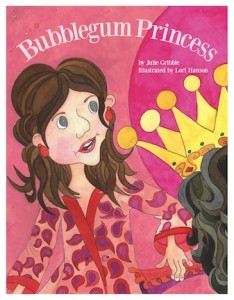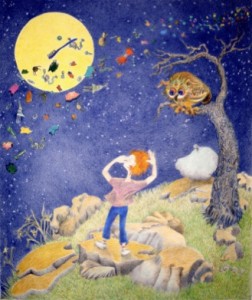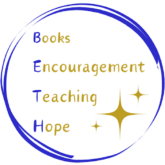
I am delighted that Julie Gribble has agreed to do this series of blog posts on the process she went through in creating, publishing, and marketing her picture book, Bubblegum Princess, (written by Julie, illustrated by Lori Hanson). Julie’s background, as you can see from the brief post I did last month, is in film and television, which has given her a unique perspective from which to approach the production of a picture book. You will see this even in this introductory post.
Now, let’s see what Julie has to say…
Background
First let me start by thanking Jules Feiffer – if it weren’t for him, illustrator Lori Hanson and I would never have met.
On an early winter morning, about 3 years ago, I was running late to hear him speak at the SCBWI Winter Conference in NYC (sign up to go if you haven’t already). It was my first conference and I didn’t yet know who was who, but I certainly did know who Jules Feiffer was! When I got to the hotel, I jumped out of my cab and tore up the stairs to grab a front row seat in time to hear his keynote speech. But I arrived late and was stuck in the back of the room, sitting on a camera platform.
Jules was talking about his early days rooming with Norton Juster. Norton did all the cooking, so when he’d asked Jules to illustrate The Phantom Tollbooth, Jules thought he’d better do it if he wanted to keep eating. Everyone was laughing except the woman behind me. I thought perhaps I was blocking her view. I had plopped myself down in front of her after all, so maybe that’s why she was grumpy. I scooted over as far as I could.
During the break, I asked if she wanted some tea. She lit up. The grumpiness I’d perceived had been her pre-caffeine persona (I have one of those). I noticed a beautiful illustration tucked in her badge ID and we got to talking. She was a true sweetie. We were both starting out, she was interested in illustrating children’s books and I was interested in writing them. How perfect that we should meet to hear Jules speak about the same.

Why publish independently?
The DIY, entrepreneurial approach was already in my wheelhouse. Independent film projects are quite common, particularly spec short film projects where you gather a group of friends and talented colleagues together to work on a project that you all believe in. Short films are your calling card as a new filmmaker. They can lead to other projects, collaborations, and help you build your audience.
At that SCBWI conference, I learned that if you have no platform, there is little to no chance your manuscript will make it past the marketing team. That’s understandable, publishing is a business after all. Then I spoke to traditionally published authors who had been doing most if not all of their own marketing. Hmm, but what about that marketing team?
Also, there seemed to be no place in traditional publishing for the new author who wished to collaborate with an illustrator. Typically, an illustrator is selected for, and does not work directly with, a picture book author. Now, where’s the fun in that? I’m a visual storyteller who enjoys the collaborative creative process. How will I learn how to make a picture book if I can’t make a picture book? At SCBWI, I’d finally found my tribe, people who love creating stories for families and children, but was there no place for me?
Luckily, Lori couldn’t have agreed more.
Lori says:
We have taken our ideas, writing and imagery, and developed them into a finished product, completing all of the steps of the professional process along the way: storyboard, book dummy, book layout, etc.
This of course is the best education imaginable for someone who wants to get started writing and/or illustrating a children’s book. This experience has provided a platform where we have done the actual “work” of creating a book without having to go through the labyrinths or hoops of traditional publishing.
And back to Julie:
Win-win, and why not?
So the decision to publish independently sort of made itself. We could spend years creating an acceptable platform by writing about writing and illustrating picture books (I admire people who do this — they are much wiser than I’ll ever be) or we could just jump in and produce a picture book ourselves.
And here’s when it started to make sense — what if that book then became our calling card? Our platform, if you will. We could learn what goes into making and marketing a picture book while building our audience and learning about the business of publishing. Why not? The digital revolution in media had made this possible.
For independent filmmakers, HD digital video had opened once closed doors, so we thought an eBook, something we could manage creating and formatting ourselves, would be our chosen format. We had discovered the key to a place where an author and illustrator could collaborate on a picture book.
But here is something we also knew: once that door was opened and our little book was released into the world, it would forever be available for all to enjoy or roundly ridicule — it was up to us to make sure it was the former. We surrounded ourselves with talented people to help make that so, but I was still a bit nervous and anxious. I’ll show you excerpts from emails to our dear editor that will show you just how nervous and anxious I was — hopefully you’ll laugh. I was like a mom getting her little girl ready for the first day of school. I so wanted her to do well.
So, in this series I’ll explain how we did it. What we did well and what we did not-so-well. What to do and what not to do. And most importantly, what we learned.
Next in this series: Choosing your Illustrator/Choosing your Author or How to Find a Best Friend for You and Your Story.
~ ~ ~
Biographical information:
Julie Gribble was the first picture book author accepted into the Stony Brook Southampton Children’s Literature Fellows program and has been mentored by Emma Walton Hamilton and Cindy Kane Trumbore. She’s a full-time writer and a member of SCBWI, ChLA, and BAFTA.
Lori Hanson received her Master of Fine Arts from the San Francisco Art Institute and served an apprenticeship under celebrated artist Gregory Gillespie. She’s a member of SCBWI.
Bubblegum Princess, a picture book inspired by the Duke and Duchess of Cambridge, has received a First Place Royal Dragonfly Children’s Picture Book Award and a nomination for a Cybils Award.
Links:
You can find Julie at the NY Media Works website.
You can find Lori at her website.
You can find Bubblegum Princess at her website or on Amazon.
~ ~ ~
Julie welcomes your questions — if you have any questions about the independent publishing process, please leave them in the comments. Thank you!

Awesome!!! Great true story! 😀
Thanks, Erik!
Thank you for hosting this series, Beth!
Thank YOU, Julie!
What a great series this looks to be! Thanks Ms Stilborn!
Thanks, Rhythm — I think it’s going to be a great series, too!
Can’t wait for the next in the series! Thanks Beth and Lori and Julie.
You’re welcome, Damon! I can hardly wait, too! Second Monday of March!
What a great interview. I’m very I impressed and interested and will follow along with the series.
Thanks, Sylvia! Glad you’re going to follow along. I think it’s going to be fascinating, and great information.
Great blog post. I love to hear the motivation and planning behind such projects.
Thanks, Joanna!
Hats off to you and Lori, Julie…being a trailblazer is not an easy path to take. How kind of you to share your triumphs and tragedies…so that all of us can benefit from your efforts.
I’ll be following eagerly…thanks to you, Beth, for arranging this awesome series!
Thanks, Vivian! I, too, am grateful to Julie and Lori for sharing their thoughts and experiences.
Goodness, I’m so happy to be able to share this journey with you all. There’s so much to tell …
Whenever we thought we’d lost our way and couldn’t finish, someone was always there to encourage us to continue.
So glad you’re sharing this – and that you shared further to say how the encouragement of others helped you. What would we do without that support?
I am looking forward to the next post. Thanks for sharing your story Julie and Lori. And thanks for posting the series, Beth.
Thanks, Alayne!
I’m really enjoying following the process of Julie and Lori’s self-publication process. Thank you for putting it into easily digestible installments, Beth. I know I have so much to learn if I choose to go this route, and I appreciate this free education I’m getting here.
Thanks, Teresa. I have to give all the credit to Julie for the instalments, and everything else. I’m just providing the venue, she’s providing the good stuff!
Pingback: How to Make a Picture Book — The Making of Bubblegum Princess: Part 2: Choosing your Illustrator/Choosing your Author
What a great idea for a series! I look forward to learning about the whole process. With the changing face of the publishing landscape, I think self-publishing is going to become an option for more and more writers and illustrators, and there is a lot to learn about how to do it right! Thanks for sharing, Beth and Julie. Can’t wait for the next post 🙂
Pingback: How to Make a Picture Book, part 3